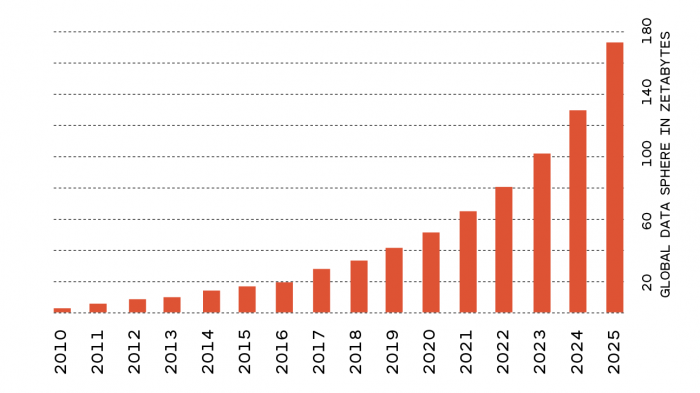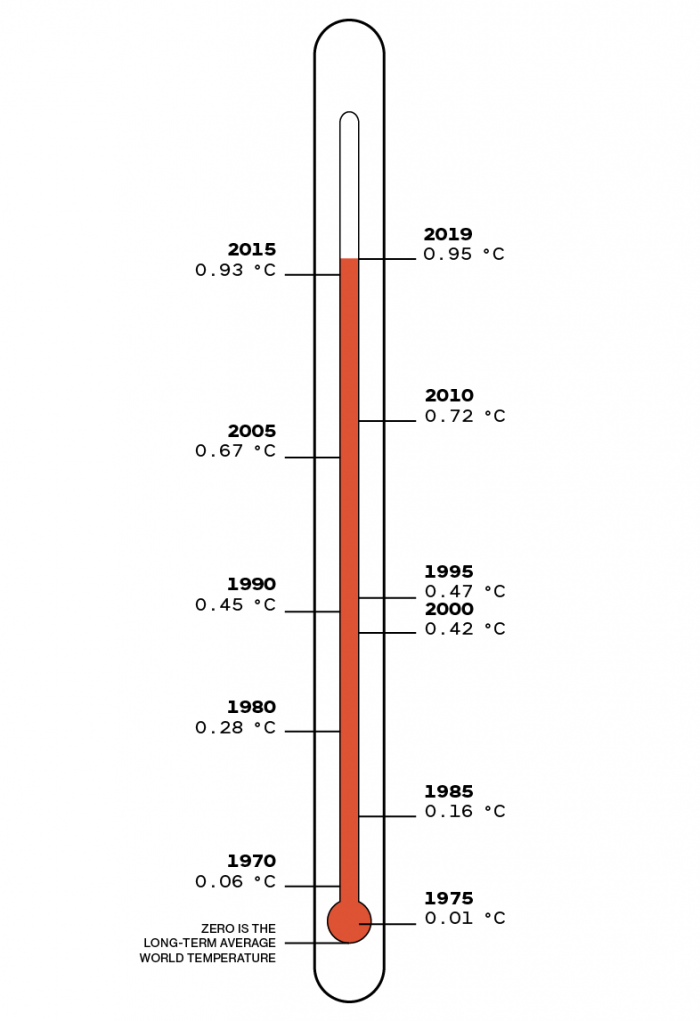Five forces that will shape the future
US wealth gap
Since 2007 the bottom 50% has had zero or negative wealth (i.e., debt).
1980
- Top 10% of people: 65% of wealth
- Middle 40% of people: 34% of wealth
- Bottom 50% of people: .01% of wealth
2014
- Top 10% of people: 73% of wealth
- Middle 40% of people: 27% of wealth
Source: World Inequality Database (2018)
Data explosion
We’re going to need better storage, processing, and privacy.

Source: IDC Research, The Digitization of the World. From Edge to Core. (2018)
Rise in average global temperatures
As surface temperatures increase, so will sea levels, extreme storms, and habitat disruption.

Source: NOAA National Centers for Environmental Information, Climate at a Glance (2020)
Language extinction
From 1950 to 2010, 230 languages went extinct. Today, a third of the world’s languages have fewer than 1,000 speakers left.
Source: UNESCO World Language Atlas (2010); Ethnologue: Languages of the World (2019)
An older population
Today, 9% of the global population is over 65. That’s going to grow in the next decades, redefining work, health care, and our economy.
Source: United Nations, Department of Economic and Social Affairs, Population Division (2019).
Deep Dive
Humans and technology
Building a more reliable supply chain
Rapidly advancing technologies are building the modern supply chain, making transparent, collaborative, and data-driven systems a reality.
Building a data-driven health-care ecosystem
Harnessing data to improve the equity, affordability, and quality of the health care system.
Let’s not make the same mistakes with AI that we made with social media
Social media’s unregulated evolution over the past decade holds a lot of lessons that apply directly to AI companies and technologies.
Stay connected
Get the latest updates from
MIT Technology Review
Discover special offers, top stories, upcoming events, and more.